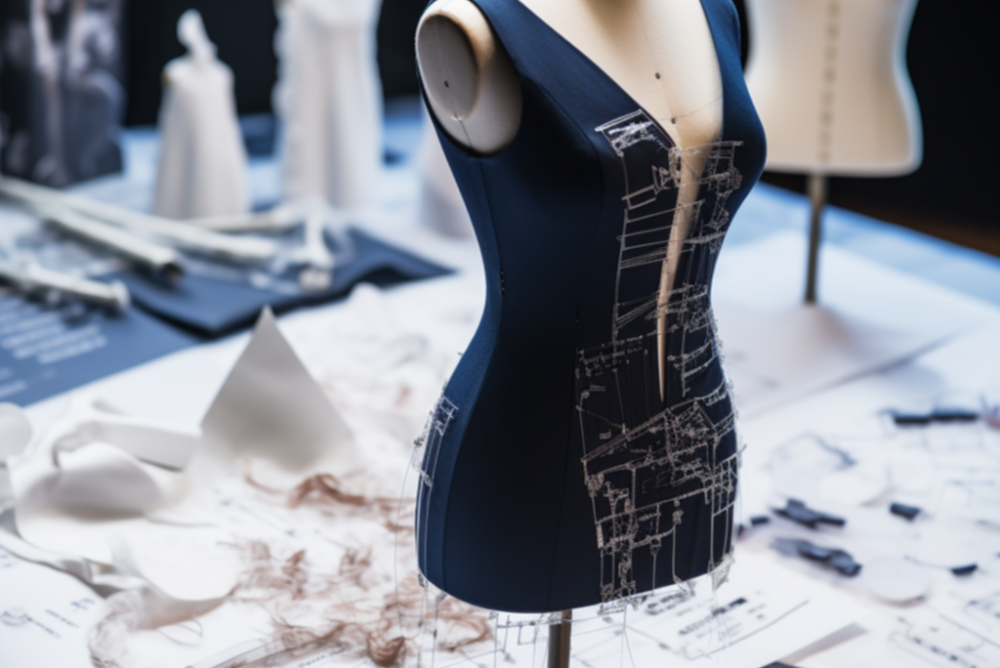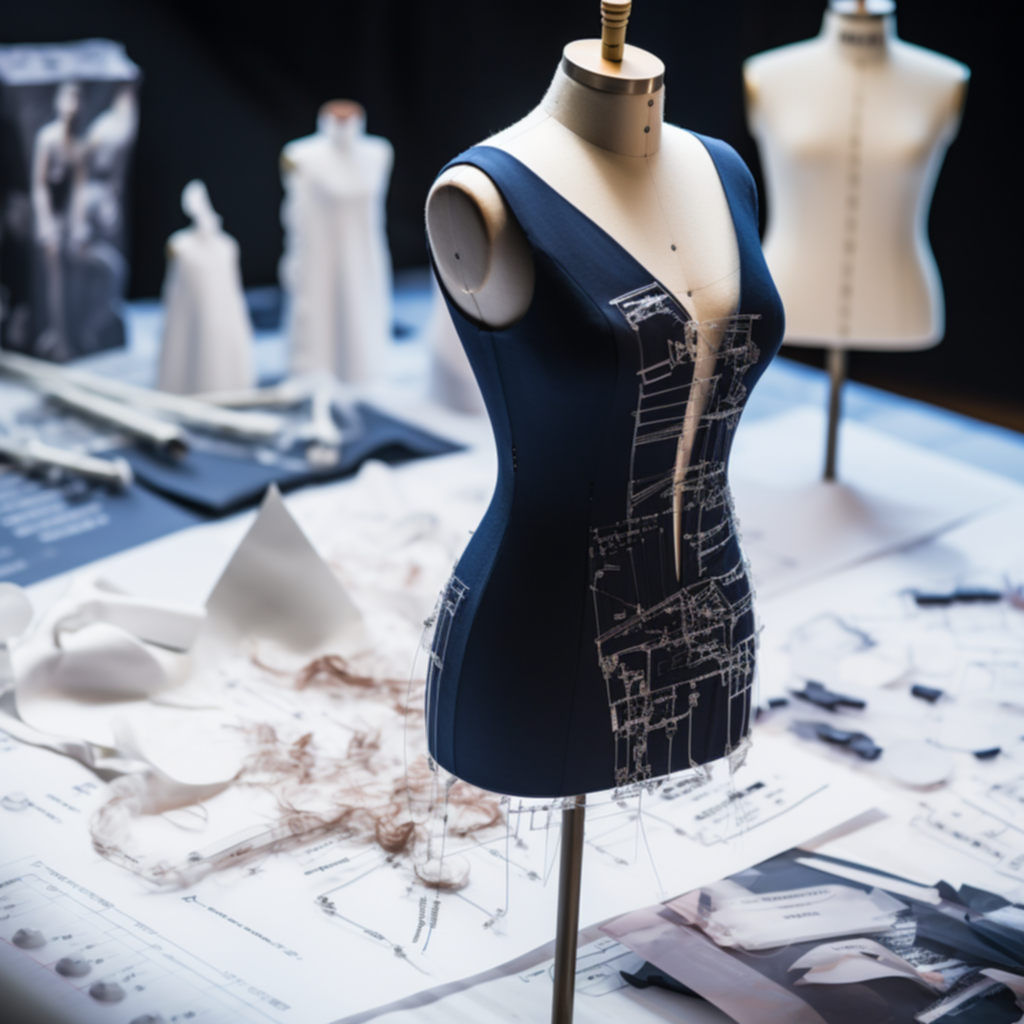Mastering Garment Specification: A Comprehensive Guide


In any industry, precision is key. But perhaps nowhere is this more true than in the world of fashion, where the difference between a masterpiece and a mess can come down to millimeters. Measurement specifications, commonly referred to as 'specs,' are the blueprint of any garment. They define everything from the width of a sleeve to the depth of a neckline, serving as the essential guide for both designers and manufacturers alike.
Specs are not merely a technical formality; they are the language through which a design concept is translated into a tangible product. Getting them right ensures not only the aesthetic integrity of a design but also its functional viability. Conversely, errors in spec can result in costly production delays, wasted materials, and dissatisfied customers.
Therefore, knowing how to properly 'spec' a garment is a critical skill for anyone involved in the creation of apparel. Whether you're a seasoned designer or an aspiring fashion student, this article aims to provide you with a comprehensive guide to the art and science of garment specification.
Importance of Accurate Measurement Specification
When you slip on a well-fitting garment, you may not always think about the meticulous planning that went into its creation. Behind each curve and seam lies a complex system of measurements, ensuring that the fabric sits just right. Accurate measurement specifications are not just beneficial; they are absolutely vital for several reasons:
- Cost Efficiency: Incorrect specs can lead to fabric wastage, affecting the overall cost of the garment. Precise measurements maximize material utility and reduce production waste, thereby making the process cost-effective.
- Quality Control: Accurate specs are integral to quality assurance. Misalignments or inconsistencies in measurements can be flagged early in the production process, thereby ensuring a high-quality end product.
- Consumer Satisfaction: A garment that fits well will always find favor with consumers. Accurate specifications lead to better fitting clothes, thereby increasing customer satisfaction and brand loyalty.
- Streamlined Production: A detailed and correct spec sheet acts as a roadmap for everyone involved in the garment's production. It streamlines the manufacturing process and helps avoid unnecessary delays or revisions.
- Global Sizing Standards: As fashion becomes more global, maintaining a consistent sizing standard across different markets becomes crucial. Accurate specs assist in adhering to international sizing standards, ensuring a uniform fit across diverse consumer bases.
- Sustainability: With growing awareness of sustainable practices, reducing waste through accurate measurements is becoming increasingly important, aligning the fashion industry with eco-conscious values.
- Legal Compliance: Inaccurate specs can also lead to legal ramifications, especially if they lead to safety issues. For instance, children’s clothing must adhere to stringent guidelines; failing to meet them can result in product recalls and legal action.
- Innovation: Accurate specifications also lay the foundation for innovative designs. They allow designers the freedom to experiment while staying within the boundaries of practicality and comfort.
Basics of Specifying a Garment
Before diving into the how-to, it's imperative to understand the different types of measurements that go into specifying a garment. A clear grasp of these basics will set you up for success. Generally, the types of measurements you'll work with can be divided into three main categories:
Flat Measurements
These are the dimensions taken directly from a flat-laid garment, such as width, length, and depth. Flat measurements are especially useful during the manufacturing process as they serve as quick reference points for quality control.
Body Measurements
Unlike flat measurements, body measurements are taken from an actual human figure. These include parameters like waist size, chest circumference, and inseam length. Body measurements are often the starting point for designers, who then adjust these to create garment specs.
Grading
Grading refers to the process of resizing a base pattern to create additional sizes. It involves a set of mathematical formulas and ratios that help convert a sample garment's measurements to various other sizes.
After understanding these types of measurements, the next step is to know how they interact. Often, flat measurements and body measurements are used in tandem. For instance, the body measurement for waist size would inform the flat measurement of a skirt's waistband. Similarly, grading plays a role once the base size has been established, helping to create a full range of sizes for mass production.
Getting these basics right is like setting a strong foundation for a building. They are the elementary yet critical aspects that will affect all subsequent steps in the garment specification process.
Tools of the Trade
Armed with an understanding of the basics, it's time to gather the instruments that will turn your knowledge into actionable results. The specification process calls for a few pivotal tools, each with a unique role in ensuring accuracy and efficiency.
Measuring Tape
The simplest yet most indispensable tool in your kit. A measuring tape provides the raw data upon which all else is built. Make sure to invest in a high-quality, flexible, and retractable tape that can easily conform to the shapes you're measuring.
Spec Sheets
The spec sheet is your roadmap, outlining every dimension, material, and production step involved in creating the garment. Often, these are digital documents that can be easily shared and updated. They serve as the definitive guide for everyone from designers to manufacturers, ensuring everyone is on the same page.
Software Solutions
There are various software packages designed specifically for garment specification. These can automate grading, generate spec sheets, and even produce 3D renderings of the finished product. Some well-known software options include Adobe Illustrator for design schematics and Gerber for grading and measurement specifications.
Calipers
For measurements requiring extreme precision, especially for small components like buttons or fasteners, a caliper can be an invaluable tool. They can measure the depth, internal, and external dimensions with high accuracy.
Reference Books
Various guides and reference books offer standards for garment specifications. These can serve as a handy double-check against your own measurements or as a starting point for certain types of garments.
Quality Control Tools
In addition to measuring tools, quality control instruments like fabric weight scales, fabric hand testers, and color matching systems can also be important. These ensure that not just the size but the material and aesthetic aspects of the garment meet specifications.
Each of these tools plays a critical role in the specification process, so familiarity and proficiency with them are key. The right toolset not only ensures that your specs are accurate but also that the process of gathering them is efficient and effective.

Step-by-Step Guide to Specifying a Garment
Now that you're acquainted with the what and the how, let's dive into the step-by-step procedure for specifying a garment. The following guide aims to be a comprehensive walkthrough, from initial design to final spec sheet preparation.
Step 1: Initial Design Sketch
Start with a basic sketch of the garment, either by hand or using software like Adobe Illustrator. This sketch serves as a visual guide for identifying points that will need measurements.
Step 2: Define Measurement Points
Refer to your sketch and identify key areas where measurements will be taken. Common points include length (overall and specific parts like sleeves), width (at various parts), and depth (e.g., neckline).
Step 3: Take Body Measurements
Using a measuring tape, obtain body measurements from a fit model or mannequin. It's essential to follow industry standards on how to measure different points accurately.
Step 4: Calculate Flat Measurements
Use the body measurements as a starting point to calculate the flat measurements for the garment. Add allowances for ease, darts, or any design elements that modify the fit.
Step 5: Grading
Utilize grading rules to extend the flat measurements into additional sizes. Software solutions can be particularly useful here for automating this process.
Step 6: Create a Preliminary Spec Sheet
Compile all this information into a draft spec sheet. The sheet should be comprehensive, listing all measurements, tolerances, and even fabric types and stitch patterns, if possible.
Step 7: Prototype and Revise
Create a sample garment based on your preliminary spec sheet and evaluate its fit and design. Make any necessary revisions to the spec sheet based on this evaluation.
Step 8: Quality Control Checks
Conduct quality control checks on the sample, focusing on both measurement accuracy and material quality. Make any final revisions to the spec sheet as necessary.
Step 9: Finalize Spec Sheet
After all revisions and checks, finalize your spec sheet. This will be the document guiding the garment’s production, so make sure it's as accurate and comprehensive as possible.
Step 10: Documentation and Archiving
Once finalized, archive the spec sheet and any relevant documents. This ensures you have a solid reference for future projects or iterations.
Each step is crucial in ensuring the production of a garment that meets both aesthetic and functional requirements. Take your time with each phase, double-check your measurements, and always consult your tools and reference materials to validate your specs.
Common Mistakes and How to Avoid Them
In any field that requires precision, the margin for error is often slim. In garment specification, mistakes can be costly and time-consuming. Here are some common pitfalls and how you can avoid them:
Mistake 1: Overlooking Tolerances
Solution: Always specify a tolerance range for each measurement. Tolerances account for the inevitable small variations that can occur during production, thus avoiding unnecessary rejections.
Mistake 2: Ignoring Fabric Properties
Solution: Different fabrics have unique properties like stretchability or shrinkage. Always adjust your measurements to account for these factors.
Mistake 3: Neglecting to Double-Check
Solution: Always double-check your measurements and calculations. This seems obvious but is often overlooked, especially when rushing to meet deadlines.
Mistake 4: Using Inconsistent Units
Solution: Consistency is key. Stick to one unit of measurement throughout your spec sheet to avoid any conversion errors or misunderstandings.
Mistake 5: Not Updating Spec Sheets
Solution: Designs and requirements can change throughout a project. Make sure to keep your spec sheets up to date to reflect these changes and communicate them to all relevant parties.
Mistake 6: Ignoring Quality Control
Solution: Always incorporate a step for quality checks before finalizing any spec sheet. This ensures that the garment produced meets all necessary standards.
Mistake 7: Relying Solely on Software
Solution: While software tools are incredibly helpful, they should not replace human expertise and scrutiny. Always manually review any automated calculations or specifications.
By being aware of these common mistakes and implementing the suggested solutions, you'll be well on your way to avoiding the pitfalls that can derail even the most promising garment project. An ounce of prevention, in this case, is certainly worth a pound of cure.

FAQs: Frequently Asked Questions
What is a spec sheet?
A spec sheet is a comprehensive document that outlines the measurements, materials, and production steps for a garment.
How important are tolerances in garment specification?
Tolerances are crucial. They account for small variations in production, helping to prevent unnecessary rejections of garments.
Can I rely solely on software for garment specification?
While software can be a useful tool, it should never replace human expertise. Always double-check automated calculations.
How often should I update my spec sheets?
Update your spec sheets whenever there's a change in design, material, or production methods. Communication is key among all involved parties.
What's the role of quality control in garment specification?
Quality control ensures that the produced garment meets all specifications and is of high quality, from material to stitch to measurement.





-500x500.jpg)
-500x500.jpg)
-500x500.jpg)
-500x500.jpg)
-500x500.jpg)